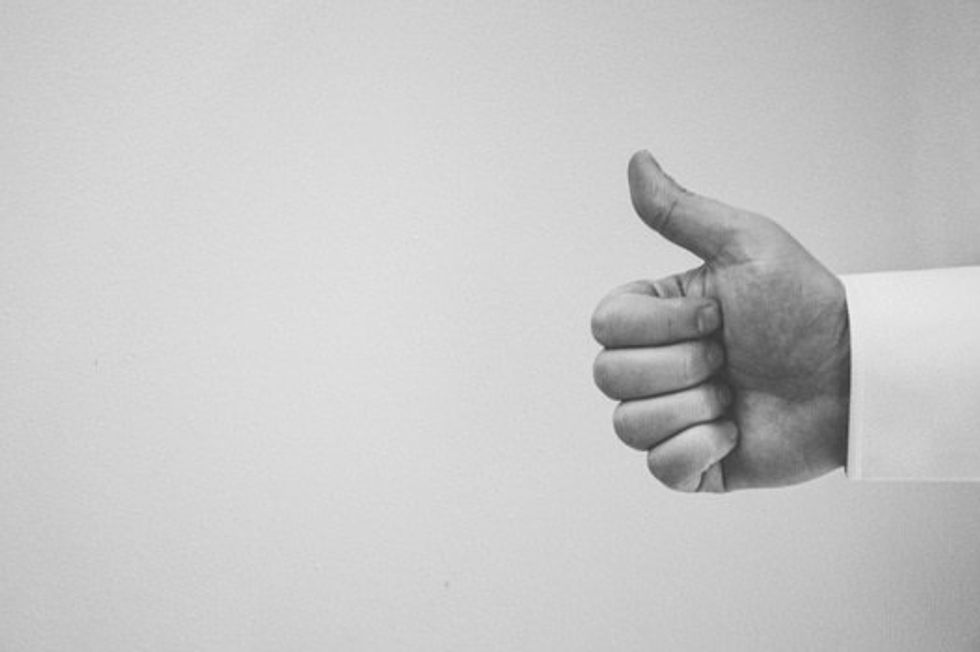How long can you look at yourself in the mirror before the flood of negative thoughts come rushing in?
The human brain is a fascinating thing; the human mind even more so. Our main books of focus this week are Happiness Hypothesis by Dr. Jonathan Haidt and Hardwiring Happiness by Dr. Rick Hansen. Haidt and Hansen have a combined 40-plus-years studying the teachings of Buddha, Jesus, Plato and other great thinkers as well as Neurology (how the brain works) trying to hack happiness. First what exactly is happiness:
"A state in which you can deal with life's challenges, but in your core, you still have an increasing unconditional sense of well being." - R. Hansen.
Both authors come to several conclusions on how to be happy, but we'll just focus on a couple today. The biggest takeaway is to understand you have two brains that have two very different agendas: The conscious and subconscious, short-term and long-term memories or...
The New Brain and the Old Brain
-Your Old Brain is responsible for keeping you alive...that's it.
-Your New Brain is responsible for willpower/long term decisions/rational thinking/happiness
The problem with most of us is that the Old Brain is running the show and it does not give a fuck if you are happy or not. This pops up all over Psychological studies. Humans have what's called the negativity bias.
The Old Brain prefers negative information.
Negative information is more crucial to our survival. This is why the media is full of scandals, violence, and threats of economies collapsing. We love the negative.
“If you miss out on a carrot today, you’ll have a chance at more carrots tomorrow. But if you fail to avoid a stick today – WHAP! – no more carrots forever. Compared to carrots, sticks usually have more urgency and impact.” - R Hansen
Our brain does this on purpose. It is crucial for survival to pay attention to negative things and survival is more important than happiness. This is OK though. The important part is to recognize that we have this tendency. Once we know this, we can work within the rules of the Old Brain to get us what we want.
"Your mind is an efficiency tool and it loves patterns." - Teal Swan
We need to talk to the Old Brain, we need to get it on our side...but how do we do this? We have to prove to the Old Brain that happiness is critical for survival. We do this by using the New Brain. Enter the science of habits and how to learn.
Learning Your Happiness Habit
What is learning? Ever wonder what a habit is? Basically a habit is something we do over and over until we don't have to think about it. This is important. We do it over and over consciously (New Brain) and then it becomes an unconscious habit (Old Brain). This is how we prove to the Old Brain what is important to us.
The purpose of a habit is to save mental energy, and the Old Brain requires less energy than the New Brain.
All habits, including happiness, comes down to conserving energy. If you think a thought over and over in the New Brain (consciously)...the Old Brain says "hey, New Brain, you are spending a lot of calories(energy) doing this thing over and over....this MUST be important to us (because you won't stop doing/thinking it). It would save the both of us a whole lot of calories (energy) if you let us (Old Brain) take it from here"....boom you have a habit and no longer have to consciously think about it.
This is great and all, but what habits do we create and how the hell do we do them? Meditation is a popular one for happiness that the book recommends and I recommend as well (If Kobe, Michael Jordan, and Tom Bradymeditate I think we should to). Meditation is not the only solution though. It's much simpler than that. Rather just learn to be happy.
You already are happy, you just don't remember it.
You have happy moments in your day. I guarantee it. There's all these opportunities around us that we experience but do not internalize. The problem is the Old Brain doesn't remember these happy moments because no neural pathway was created to hardwire that happy thought. In order for the neural pathway to cement itself you need these 5 elements. This is how to talk to the Old Brain.
- Duration - Think a thought longer ~20 seconds
- Intensity - Feel the feeling more deeply - this is why we prefer negative emotion (they are more intense)
- Multimodality - Feel the emotion in different parts of your body
- Novelty - Look for something new in the experience - "thru the eyes of a child" (kids learn quicker)
- Personal Relevance - Think of all the ways this new experience will help you and those you care about
This is how you learn and this is how you make habits. We have all these wasted opportunities in every day life where we experience happiness but it doesn't stick. You can meditate, you do a gratitude journal, but it won't matter unless you are actually rewiring your brain and creating new neural pathways.
Looking at cat videos, watching stand up, or just looking at pictures of puppies all day can increase happiness but only if you are creating the neural pathway from that experience.
If there is no neural pathway formed, to your brain, its as if the experience never happened. So look at puppy photos, the longer and more intense you feel that smile you get from the little fella the more you are actually rewiring your brain to prefer happiness. The cool part is if you get the five elements (Duration, Intensity, Multimodality, Novelty, and Personal Relevance) down it becomes easier and easier to be happy.
Til next time,
-Dylan
Happiness Resources
-Meditation (I use a coach but Headspace is a great free App)
-Gratitude Journal (Spend the money so you actually do it)
-Heart Rate Variability (This has been the biggest one for me)
All photos from www.pexels.com






















